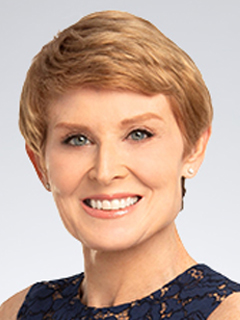A difficult pivot for the Fed
Look for dissenting votes on the Federal Open Market Committee.

The Federal Open Market Committee (FOMC) – the policy setting arm of the Federal Reserve - is widely expected to raise rates by a quarter percentage point to a 5%-5.25% range at the conclusion of its May 2-3 meeting. The decision is likely to be met with some pushback. Chicago Fed President Austan Goolsbee has argued that he would like to pause and get a better sense of the additional credit tightening in the pipeline due to recent financial market volatility.
Goolsbee is not alone. The San Francisco Fed President Mary Daly and Fed Governor Lisa Cook have expressed their concerns. It is more unusual for a Fed Governor to dissent than a President. Goolsbee is a voting member of the committee this year and after voting for rate hikes in January and March, he will likely dissent on the decision to raise rates in May. That could complicate the Fed’s messaging.
The Fed would like to signal a tentative pause, but not an end to its credit tightening policy. The Fed planned to keep “real” or inflation-adjusted interest rates rising, even as it stopped raising rates. A cooling of inflation was expected to do the remainder of the work along with the tightening that is now in the pipeline.
The first quarter core (excluding food and energy) PCE figures accelerated to a 4.9% pace on an annualized basis in the first quarter, from 4.4% in the fourth. That is the wrong direction for the Fed and will, no doubt, intensify debate about how strong a signal the Fed should send regarding a pause in rates.
The path forward is highly uncertain and further complicated by a potential showdown over the debt ceiling.
The line in the statement following the meeting that will be most watched for changes from March is, “The Committee anticipates that some additional policy firming may be appropriate in order to attain a stance of monetary policy that is sufficiently restrictive to return inflation to 2 percent over time.”
I expect the Fed to strike the “additional policy firming” reference and replace it with a nod to holding rates higher for longer to return inflation to two percent over time. The Fed’s own forecasts suggest that real, short-term interest rates will rise more than a percentage point between now and December. That is a lot of tightening between but could fail to materialize unless inflation cools more decisively soon.
The path forward is highly uncertain and further complicated by a potential showdown over the debt ceiling. Treasury bond markets are already pricing in a greater risk of default than we saw in 2011, when one rating agency downgraded the investment-grade status of U.S. debt in response to the political brinkmanship surrounding the debt ceiling. We are not likely to cross the “X date” – the day we breach the debt ceiling – until July, which gives Congress a little more time to cut a deal. However, the volatility in Treasury bond markets is problematic as it adds to funding pressures in the overall system. The yield on one-month Treasuries has fallen in recent weeks as bond traders have fled other maturities to the safety of the one-month bill, which will be paid back before the “X date” is crossed.
Much like we saw in 2011, the Fed is already gaming out potential responses. That is taking up bandwidth as the Fed is scrambling to assess how much additional tightening is in the pipeline and how the lags on rate hikes will actually play out. The Fed believes those lags are shorter than in the past – six to twelve months. That means the bulk of credit market tightening is still ahead of us. The Fed started to raise rates in March 2022 but did not move into restrictive territory until very recently.
The word of the day is “nonlinearity.” Credit conditions are expected to become markedly tighter as we move into Summer and Fall. Calibrating policy, given the uncertainty of how that process will play out, is fanciful.
Explore more
Meet our team

Subscribe to insights from KPMG Economics
KPMG Economics distributes a wide selection of insight and analysis to help businesses make informed decisions.
